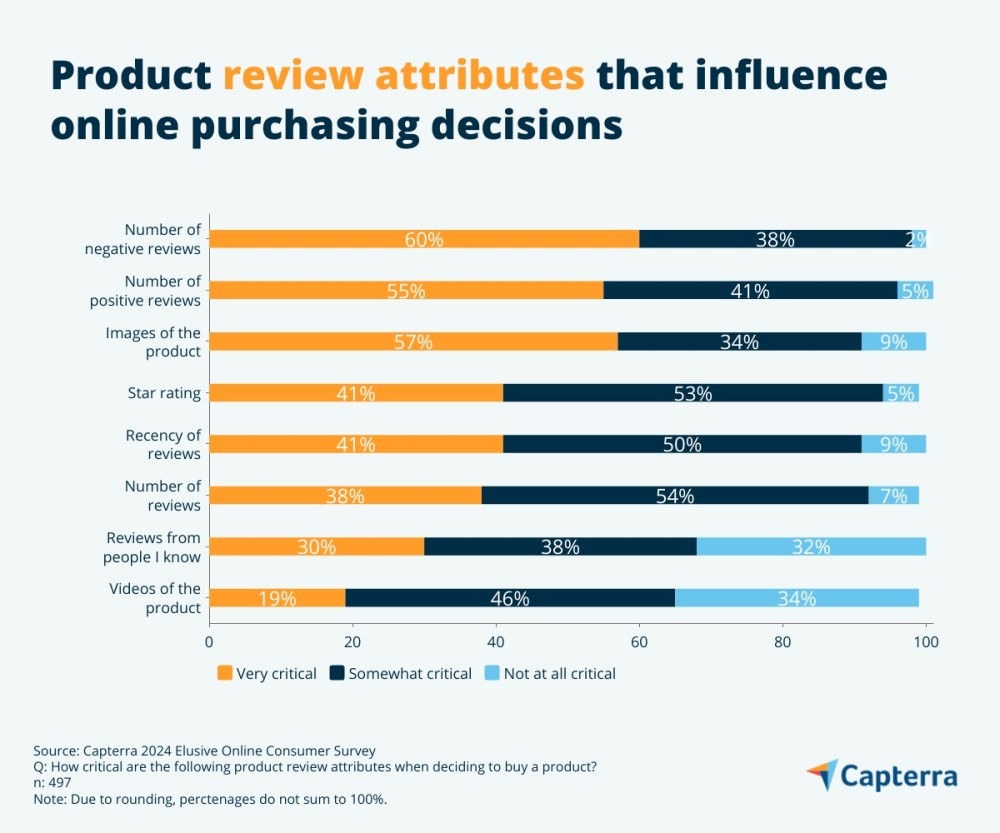Anonymous Reviews Surpass Influencer Recommendations in Consumer Trust
July 26, 2024
In the past decade, influencers have become a prominent force on social media, with businesses of all sizes collaborating with them to promote their products and services. However, new research by Capterra reveals a shift in consumer trust: only 18% of online shoppers trust influencer reviews, while a substantial 76% place their confidence in reviews from online strangers.
Influencer marketing, once a groundbreaking strategy, has become oversaturated across social media, podcasts, and other media channels. As consumers grow accustomed to pervasive endorsements, they increasingly turn to the unbiased opinions of fellow consumers. This shift in trust is particularly beneficial for small businesses that may lack the resources to engage in influencer marketing. Instead, focusing on generating positive online reviews can be a cost-effective way to boost credibility.
Capterra’s research also had some useful insights on review attributes that influence online purchasing decisions, as illustrated in the infographic below. Factors such as the number of reviews, the presence of images or videos, star ratings, and the recency of reviews all play crucial roles in influencing purchasing decisions. To leverage this, businesses should strive to cultivate a customer experience that motivates the reviewer to go the extra mile.

Source: Capterra
Tips for Generating Positive Online Reviews
1. Don’t pay for reviews.
Offering financial incentives or other rewards in exchange for positive reviews is not only unethical, but also illegal under the Competition and Consumer Act 2010. Paid reviews can mislead consumers and damage your business’ reputation. Instead, consider offering incentives for reviews generally, without specifying or implying that they must be positive. For example, you might enter all reviewers into a raffle for a gift card, but both positive and negative reviewers must have an equal chance of winning.
2. Ask customers directly.
One of the simplest and most effective ways to secure reviews is by directly asking your customers. Whether in person or over the phone/email, make the request straightforward and stress the ease of leaving a review. You should also provide options for different platforms, such as Google or Facebook, and time your request when the customer’s experience is still fresh in their mind – such as upon job completion or within 30 days of purchase.
3. Respond to reviews.
Responding to existing reviews can actually generate more reviews, as you are showing your customers that you value their opinion. Make sure that you check your online reviews regularly, so you can respond to feedback shortly after it is posted. If a customer leaves a positive review, make sure that you thank them.
However, if customers leave negative reviews, you should apologise for the bad experience and seek a resolution. Other potential customers may not be as deterred by negative feedback if you can demonstrate that you own up to your mistakes and work to fix them.
4. Highlight your reviews.
Showcase glowing reviews on your social media channels and website. Sharing positive feedback acts as social proof, potentially attracting new customers who might not have otherwise seen your reviews. Additionally, promoting your reviews can encourage other customers to leave their own feedback.
5. Run an email campaign.
An email campaign can be an effective tool for soliciting reviews from a broad audience, including past customers. While less personal than direct request, an email campaign can still drive reviews. Ensure your email is engaging and includes clear instructions on how to leave a review.
The rise of consumer confidence in online reviews highlights the importance of incorporating a review generation strategy into your business. If you need help developing this strategy, our team can help you develop a Digital Action Plan to build your reviews and digital presence. Digital Action Plans are available through the Digital Solutions program, which you can learn more about here.
Acknowledgement Of Country
Business Foundations acknowledges the traditional custodians throughout Western Australia and their continuing connection to the land, waters and community. We pay our respects to all members of the Aboriginal communities and their cultures; and to Elders both past and present.
Victoria
The Commons
80 Market Street,
South Melbourne VIC 3205
admin@businessfoundations.com.au
Western Australia
Wesley Central
2 Cantonment Street,
Fremantle WA 6160
admin@businessfoundations.com.au


Get In Touch
Have a question or to find out how we can help you, please get in touch.






